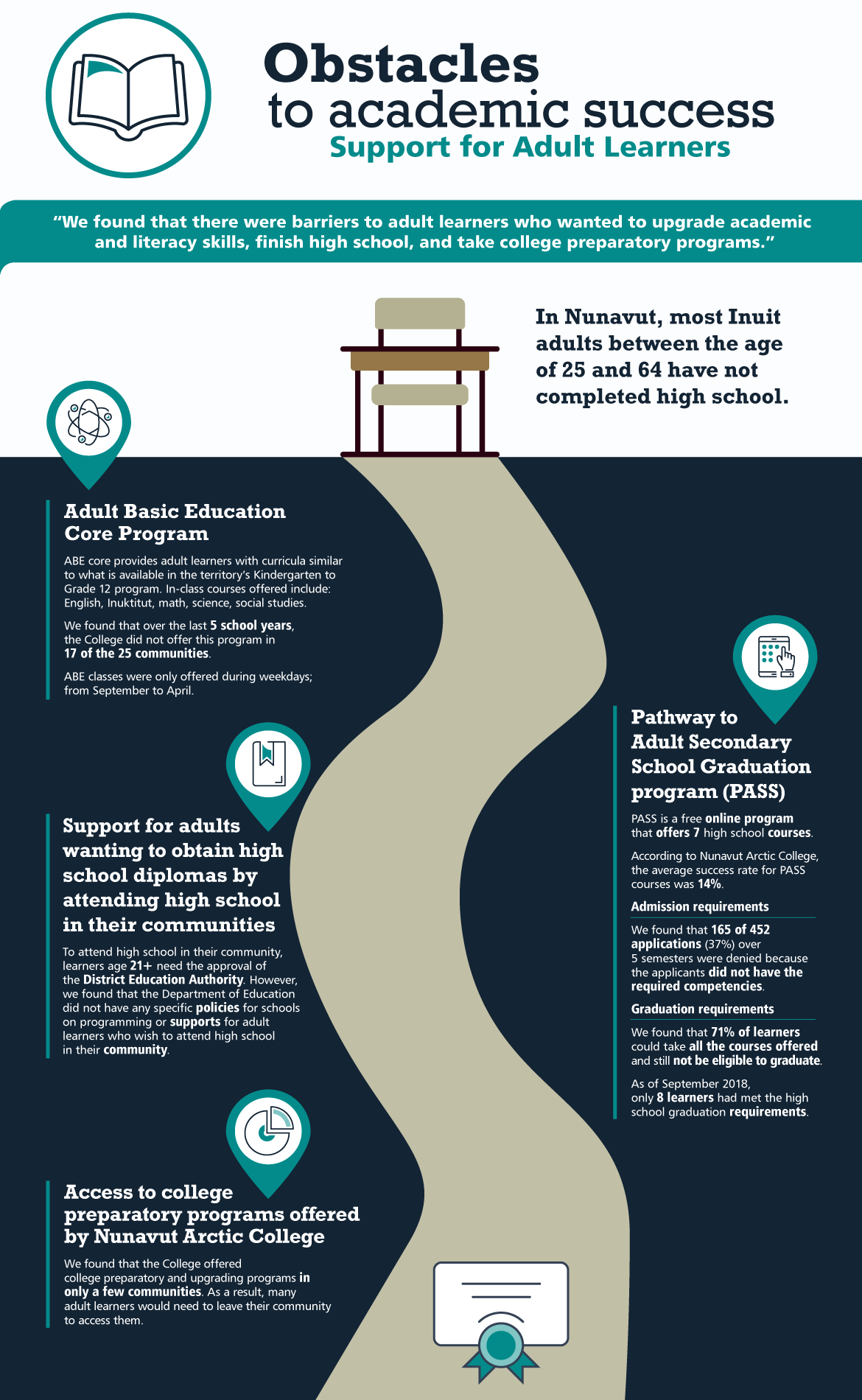Infographic: Obstacles to Academic Success—Support for Adult Learners

Text version
Obstacles to academic success—Support for Adult Learners
“We found that there were barriers to adult learners who wanted to upgrade academic and literacy skills, finish high school, and take college preparatory programs.”
In Nunavut, most Inuit adults between the age of 25 and 64 have not completed high school.
Adult Basic Education Core Program
ABE core provides adult learners with curricula similar to what is available in the territory’s Kindergarten to Grade 12 program. In-class courses offered include: English, Inuktitut, math, science, social studies.
We found that over the last 5 school years, the College did not offer this program in 17 of the 25 communities.
Pathway to Adult Secondary School Graduation program (PASS)
PASS is a free online program that offers 7 high school courses.
According to Nunavut Arctic College, the average success rate for PASS courses was 14%.
Admission requirements
We found that 165 of 452 applications (37%) over 5 semesters were denied because the applicants did not have the required competencies.
Graduation requirements
We found that 71% of learners could take all the courses offered and still not be eligible to graduate.
As of September 2018, only 8 learners had met the high school graduation requirements.
Support for adults wanting to obtain high school diplomas by attending high school in their communities
To attend high school in their community, learners age 21+ need the approval of the District Education Authority. However, we found that the Department of Education did not have any specific policies for schools on programming or supports for adult learners who wish to attend high school in their community.
Access to college preparatory programs offered by Nunavut Arctic College
We found that the College offered college preparatory and upgrading programs in only a few communities. As a result, many adult learners would need to leave their community to access them.